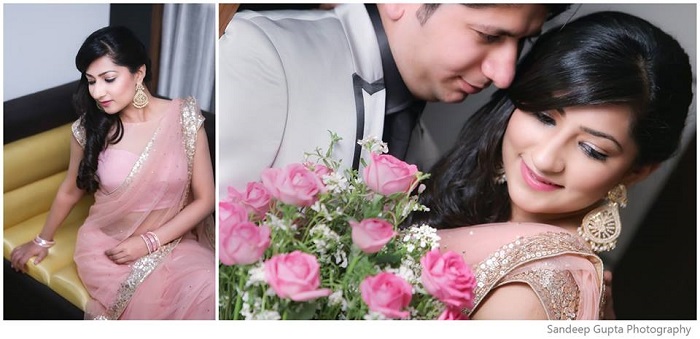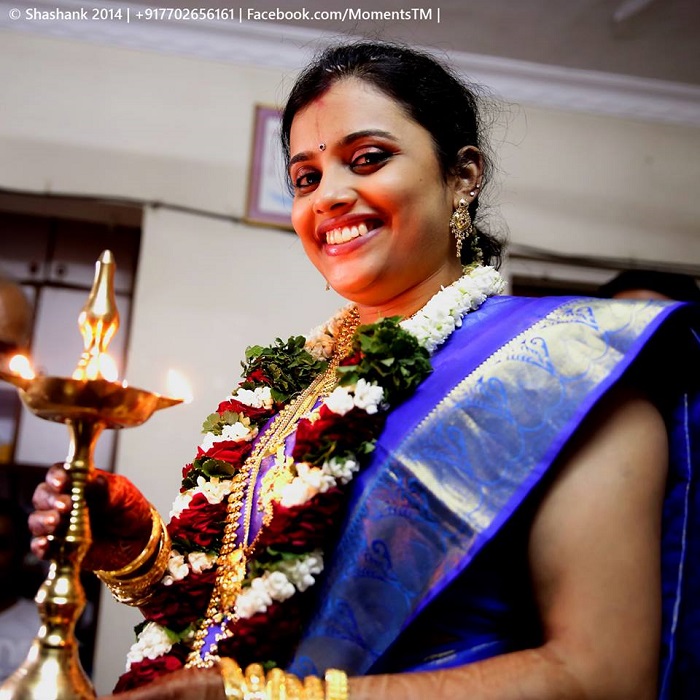Indian weddings are beautiful yet chaotic affairs. Often, a bride and her family get stressed and overwhelmed just at the thought of shopping for wedding sarees whilst making other wedding arrangements. To make matters easier, we are bringing you the essential guide to shopping for your wedding sarees. Using this ready checklist, you can certainly make things a little less stressful.
Today, shopping for wedding sarees has become a lot easier thanks to online shopping outlets. Even if you do not actually buy your wedding sarees here, you can certainly browse through their patterns and colours in order to find ones that would suit you best.
The wedding sarees checklist
To start with, make a checklist of how many wedding sarees you will need. This task can be done once you have an itinerary of your ceremonies and rituals. Accordingly, you can buy a collection with different fabrics, colours and embellishments to add variety to your bridal trousseau.
Prepare a budget
The best way to prepare a budget for your wedding sarees is to get an estimate. This can be done by visiting different stores or even getting quotes from online retailers. If you are working within a budget, you can find out ways of limiting your expenses such as buying wedding sarees wholesale or during the sale season or looking for great deals online.
Many families also travel in order to shop for wedding sarees from places where they are originally manufactured. For example, Kanjeevaram sarees are made in Kanchipuram near Chennai. Sometimes it does make sense to do this, as you can get fabulous deals, especially when buying wedding sarees wholesale. However, it is important to figure in the travel costs in order to ensure that you are truly saving money. Otherwise, there are many local reputed shops which also stock these original items.
Selecting wedding saree colours according to your skin tone
Experts say that the best wedding saree colours are the ones that lighten up your complexion. (You must also find out if your traditional wedding calls for particular saree colours. For example, in Maharashtrian weddings, brides must wear yellow silk sarees at the time of the rituals whereas Christian brides need to wear white sarees etc.)
In general: brides with darker or olive skin tones look great in earthy colours like warm browns, maroons, olive greens, or golden yellows. If tradition calls for wearing white; choose beige, ivory or cream instead of pure white, for a more flattering look.
Brides with pale skin and pink undertones will do well with bright yellows, blues and reds.
Selecting wedding sarees according to your body type
We have covered this topic in another series of articles on finding the perfect wedding sarees according to your body type.
In general: if you are tall and slim, sky is the limit. You can go in for wedding sarees in bold colours and borders and ones in net, lace or silk. If you are short and petite, avoid bold prints and strong colour contrasts. Choose fabrics like chiffons, georgettes and silk.
Selecting wedding sarees according to the time of the event
The wedding saree fabrics should also be based on the time and season of your events. If you are getting married in summer, you must avoid heavy wedding sarees to avoid discomfort.
For morning weddings: choose dark reds, maroons, orange etc.
For evening weddings: choose golds, pinks, nudes or silver for a classy appeal.
In conclusion
We are sure you have researched the topic of choosing the best wedding sarees a great deal. (So much so, that our inputs might almost be unnecessary). But, we also believe that one should ideally choose timeless wedding sarees that can be comfortably worn on other occasions such as festivals and other weddings in the family. If you find pleating and folding sarees difficult, you can also opt for pre-pleated lehenga sarees. Likewise, designer wedding sarees are also readily available today and these can help brides express their personality and individuality without compromising on the traditional aspects.





